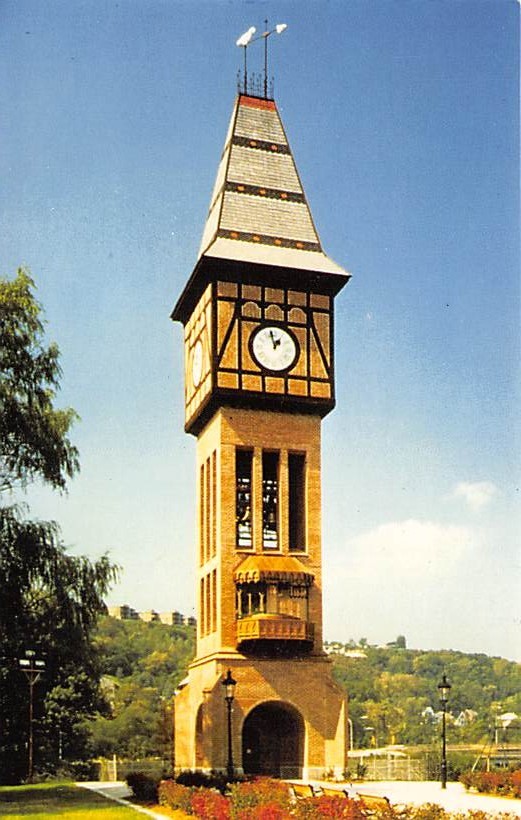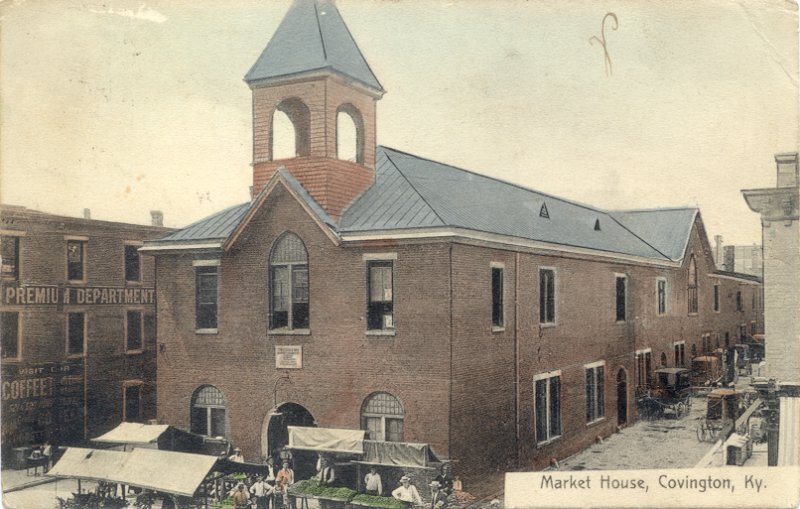Mainstrausse
In the heart of Mainstrause, Covington, a town nestled along the mighty Ohio River, the echoes of German heritage reverberate through the streets. The settlement, born out of the immigrant dreams of industrious Germans, stands as a testament to their resilience and the enduring spirit of their ancestors.
In the late 1800s, a wave of German immigrants sought refuge in the fertile lands of Kentucky, bringing with them their rich cultural traditions and skilled craftsmanship. They established Mainstrause as a vibrant hub, where the sounds of German dialects intermingled with the bustle of daily life.
At the heart of this settlement, a magnificent clock tower rose, reaching for the heavens like a steadfast sentinel. Its chimes marked the passage of time, resonating through the air, and serving as a reminder of the town's German roots. The clock tower became a symbol of Mainstrause's unity and the unwavering spirit of its people.

The architecture of Mainstrause reflected the fusion of German influence and American ingenuity. Half-timbered houses with ornate facades and gingerbread trim lined the streets, showcasing the skilled craftsmanship and attention to detail cherished by the settlers. Each building told a story, preserving the heritage and memories of generations past.
Life in Mainstrause during that era was a tapestry woven with the threads of community and hard work. Families gathered in lively beer gardens, where laughter and song filled the air, and the aroma of traditional German cuisine wafted through the streets. The town's residents embraced their German traditions, organizing festivals and parades that celebrated their culture and brought the community together.
Yet, life was not without challenges. The trials of everyday existence tested the resilience of Mainstrause's residents. They faced economic hardships, battled social prejudices, and endured the hardships of war. Through it all, the spirit of Mainstrause remained unyielding, bolstered by the strength of its German heritage and the unity of its people.
Today, the daily grocery store trips we take for granted are a far cry from how people used to acquire their food. Shopping for food on a daily basis was necessary before modern refrigeration, but it also meant planning meals around what was available at the market - where live animals mingled with freshly cut meat and fruits and vegetables of all kinds. The main markethouse in Covington was an incredibly noisy place, yet it was one of the central gathering places in the community. On the one hand, shoppers were able to purchase fresher and tastier food than some are accustomed to today, but it also limited their food choices and required more creativity when preparing meals.
The Market House in Covington is open for business. The merchants are doing a brisk business. People come from all over the County to buy and sell their goods. A variety of fresh fruits and vegetables line the stands. The smells are sweet and spicy.Freshly milled nutmeg, vanilla, and cinnamon waft in the air. The smell of fresh flowers fills the air.

Photo credit: Hub+Weber
The Westside, located immediately west of the Ohio River, grew quickly in the years leading up to the Civil War as the Kentucky city prospered. The neighborhood residents requested a market in the growing community around 1860 when Dr. J.E. Stevenson chaired the special committee that was appointed by the Covington City Council to investigate the possibility. A site on Sixth Street between Main and Bakewell was acquired. Two brick buildings were erected to anchor either side of the proposed market building, which was built to be large enough to accommodate several merchants but also be elegant in appearance and practical in design.
The construction of Sixth Street began in 1861, two years before the Civil War began. It was purposely built with a grassy median strip running down the center, allowing for two lanes of traffic to pass simultaneously. The Westside Market was built that May and it quickly became a hub of commerce and social activity. Though it remains an important landmark in Covington to this day, little did people know that it would soon find itself at the center of deep-rooted conflict.
Governor Lew Wallace came to the market house during his command of the Union troops, defending Cincinnati from a potential Confederate invasion in 1862. He set up his headquarters within the market walls and rumors spread about possible conspiracies between him and other figures in the city. The federal government paid out $25 per month to rent space from the market during this time, only adding fuel to the fire. The atmosphere of Covington grew ever more tense as the war continued.
In the years following the Civil War, the street known as Market Street flourished. By 1875, the market housed 16 butchers, stalls for 28 farmers and space for 30 area hucksters. In a glowing review in The Ticket newspaper, the Sixth Street Market House was declared “the best market house in the city” by its anonymous writer.
As times changed and people had better access to local grocery stores and ice boxes, the Sixth Street Market began a downward spiral. The buildings were failing into disrepair and business had dropped off dramatically by 1900. In 1906, members of the newly established Covington Parks Board asked that the market house be closed and the land be turned into a park. City officials agreed to the plan on May 2, 1907. Shortly after, the market was demolished.
George Steinford Park, also known as the Sixth Street Promenade, is a wide promenade separating West 6th Street that serves as the heart of outdoor activity in MainStrasse Village. The lush tree canopy and liveliness from the adjacent restaurant and retail establishments provide an exciting and picturesque environment to host events and is a great place for individuals to stroll with friends or walk their dogs.
Amidst the charming cobblestone streets and quaint alleys, a statue and water fountain stand tall with a colorful copper patinal,  Convention and Visitor's Bureau commissioned noted Greek sculptor Eleftherios Karkadoulias to do the piece. Using his daughter as a model, he worked over one and a half years and cast the Goose Girl using the "lost wax" method. The fountain was erected and unveiled in October of 1980. The Goose Girl fairy tale by the Brothers Grimm was the inspiration for the theme, representative of the culture of the area.
Convention and Visitor's Bureau commissioned noted Greek sculptor Eleftherios Karkadoulias to do the piece. Using his daughter as a model, he worked over one and a half years and cast the Goose Girl using the "lost wax" method. The fountain was erected and unveiled in October of 1980. The Goose Girl fairy tale by the Brothers Grimm was the inspiration for the theme, representative of the culture of the area.
Photo credit of George Steinford goes to The Stainford Toy foundation
George Steinford, Kenton County Commissioner and State Representative who lived at 513 West 6th Street (on the Promenade), was born in Covington in 1900. Although he had no children of his own, he still saw to providing poor children with gifts during Christmas. This goodwill lasted 50 years until his death.
Posthumously, the Rose & George Steinford Toy Foundation continues this generosity today, providing Christmas gifts for 2,000 Northern Kentucky children annually.
At about the same time, the city began working with the Commonwealth of Kentucky to transform the park, and the five city blocks surrounding it, into a German-themed village named MainStrasse.

Today, Mainstrause still stands as a testament to the indomitable spirit of its founders. The clock tower continues to chime, its melody echoing across generations. The statue stands as a reminder of the sacrifices made and the dreams realized. And the architecture, a living testament to the fusion of cultures and the enduring legacy of Mainstrause.
In the realm of Mainstrause, Covington, the spirit of German heritage lives on, etched into the very fabric of the town. It serves as a reminder of the fortitude and determination of those who settled this land, leaving a lasting mark on history and a legacy that will endure for generations to come.

